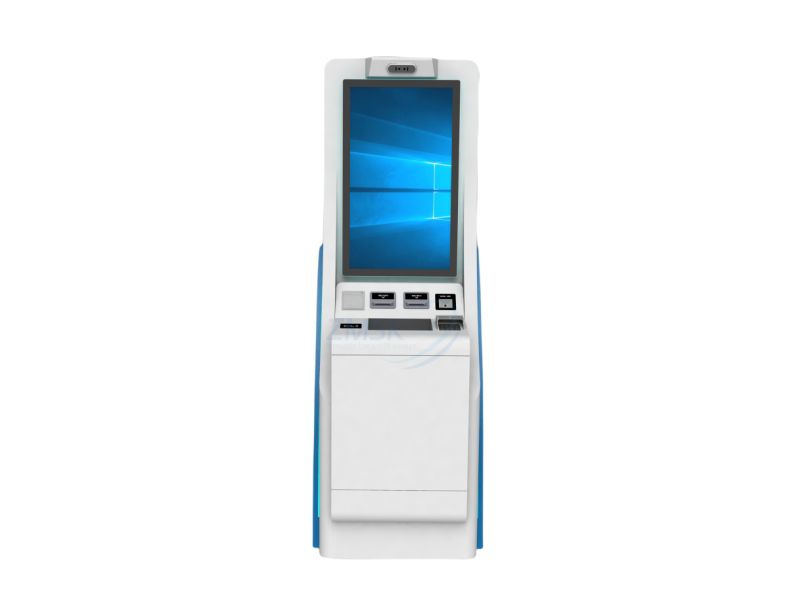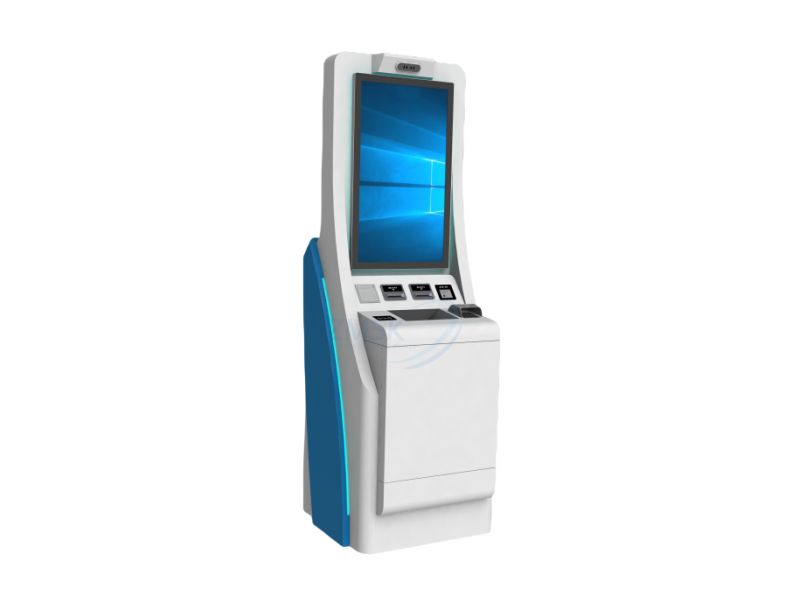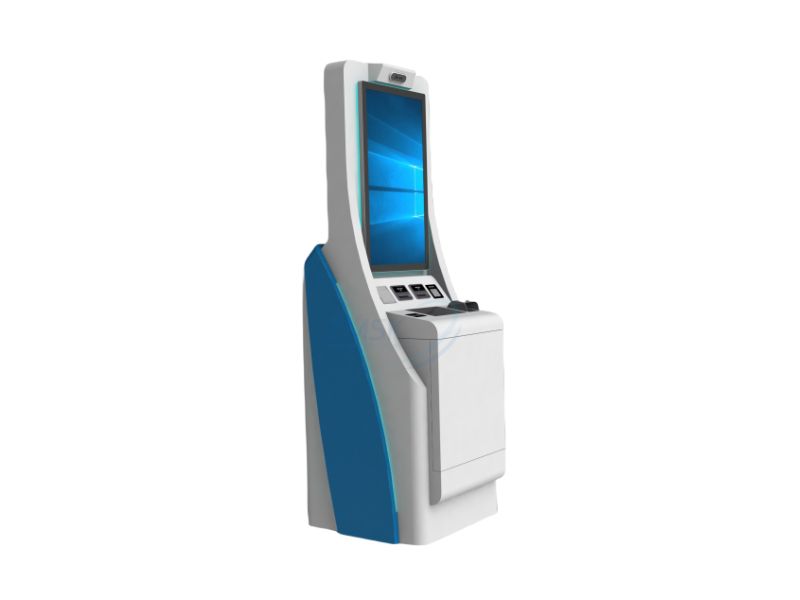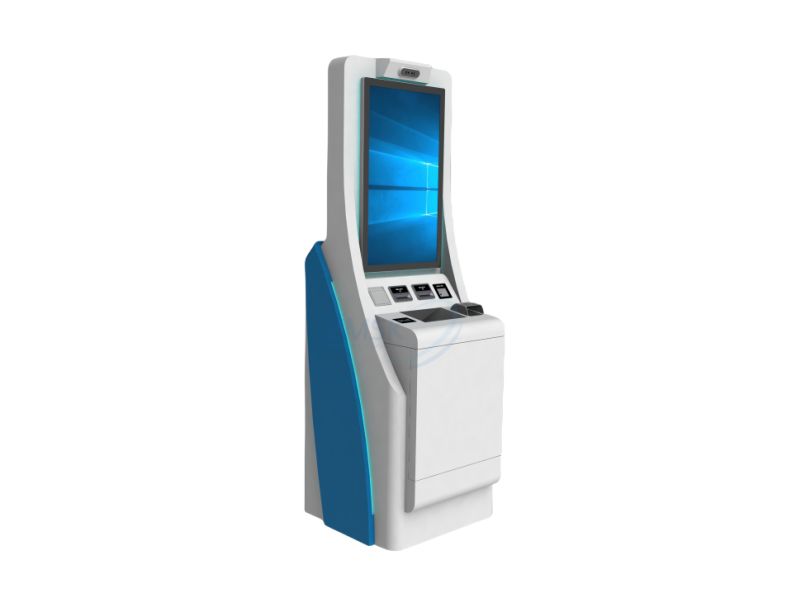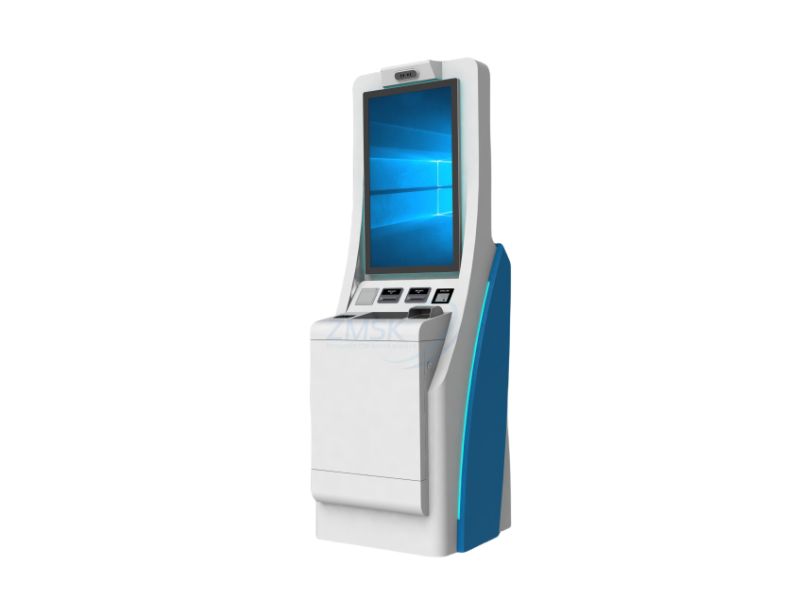The hospital self-service terminal is a highly functional and convenient device designed to streamline various processes within the hospital setting. Here are the details:Functions and Services:It enables patients to perform tasks such as registration, appointment scheduling, and payment of medical fees. Patients can also check their medical records, test results, and hospital bills. Some terminals even offer the option to print prescriptions and medical reports.User Interface:The interface is typically intuitive and user-friendly, with clear instructions and touchscreen functionality. Icons and menus are designed to be easily understandable, allowing patients of all ages and technical abilities to navigate smoothly.Identity Verification:To ensure security and protect patient privacy, it may incorporate methods like barcode scanning of medical cards, ID card reading, or biometric verification (such as fingerprint or facial recognition).Payment Options:Supports multiple payment methods, including cash, credit/debit cards, mobile payment (such as WeChat Pay or Alipay), and hospital-specific payment cards.Information Update:Patients can update their personal information, contact details, and insurance information directly through the terminal.Language Options:Often available in multiple languages to accommodate patients from diverse backgrounds.Location and Availability:Placed strategically in key areas of the hospital, such as the lobby, outpatient departments, and inpatient floors. They are usually operational 24/7 for added convenience.For instance, in a large hospital in Beijing, the self-service terminals have significantly reduced the queuing time for registration and payment. Patients can complete these procedures within minutes, improving the overall efficiency of the hospital.In a provincial hospital in Guangdong, the self-service terminals not only handle basic services but also provide health education materials and guidance on hospital navigation, enhancing the patient experience.Another example is a hospital in Shanghai where the terminals are integrated with the hospital's online platform, allowing patients to access remote consultation services and schedule follow-up appointments from home before arriving at the hospital.The specific details and capabilities of hospital self-service terminals may vary depending on the hospital's requirements and technological infrastructure.
Self-service payment / self-printing terminals for hospitals - LU7
Consult
A a vertical touch screen self-service Kiosk, which can be used for hospital self-payment service, self-service report printing, etc. If you have specific needs, we will customize the Kiosk according to your requirements.
- Model LU7
- Material quality Sheet Metal
- Style Technology Fashion
- Brand ZMSK
- Color White
- Screen 21.5
- System Android、Linux、Windows
- Touch Capacitive touch
- 58 Thermal Printing Support
- Scan Code One-dimensional code, two-dimensional code, barcode
- Card Reader IC
- Camera Monocular camera
- Password keyboard Support
- File printer A4, etc
- Encrypted keyboard Support
- Other Customized according to needs, etc
-

phone
Phone & WeChat
+86 18510956972
+86 18680322616
+86 13068785458
+86 13145835361
-

Email
Email
sales@zmsk.net
